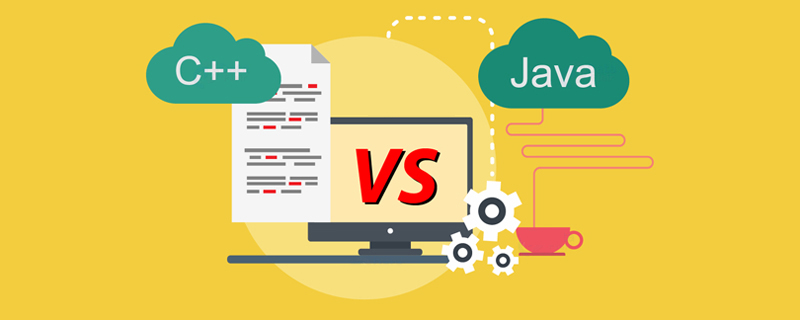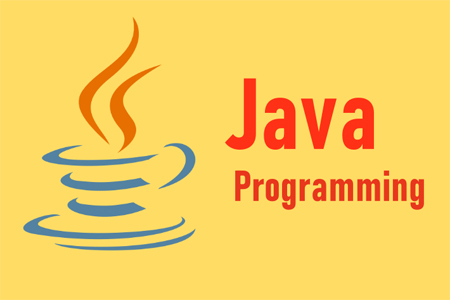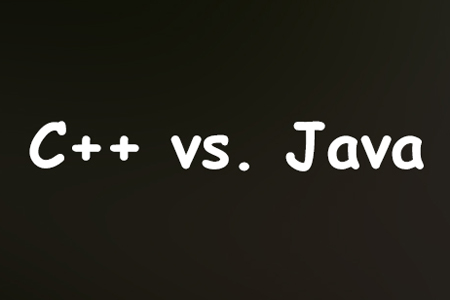What is the difference between C++ and Java
C and Java are the most commonly used programming languages. Java has a strong C influence as it was developed after C and both support the object-oriented programming (OOP) paradigm. So what's the difference between the two? The following article will introduce to you some differences between C and Java. I hope it will be helpful to you.

A brief introduction to C
C language syntax is a super version of C Set; C was developed to extend the procedural C language to include OO functionality. In C, some units are object types and some are traditional primitive types, so it's a mixed language. Due to its origin, it is sometimes inconsistent with pure OO programming (e.g. standalone functions). However, the syntax and semantics remain stable between native and object data types. [Video tutorial recommendation: C Tutorial]
Memory Management in C
C exposes its memory management to programmers, which is beneficial Customizable memory allocation strategy. Objects (primitive or class types) declared at compile time have static storage allocated by the compiler. The new operation is used to obtain dynamic storage from the heap at runtime and should be explicitly deleted using the delete operation when not in use. The memory address remains fixed for the lifetime of the object. It does not provide runtime error detection.
A brief introduction to java

Java is an object-oriented programming language. Every java Programs are defined as a class. It is a portable, device-independent language. Java's popularity comes from its large associated class library and its portability. [Video tutorial recommendation: java tutorial]
Java has unique primitive and object types and is a strongly typed language. It has no syntax for referencing primitives, but provides facilities for converting primitives and corresponding object types, such as int and integer.
Memory management in Java
Memory management is the category of JVM. Java code (data and methods) remains within the context of the class. The garbage collector is used for object release, where the system returns object memory to its pool when the object is no longer useful. Java also provides runtime memory error detection and throws appropriate exceptions when detected.
The difference between C and Java

1. Platform dependency
When compiling, Java source code is converted into bytecode; at runtime, the interpreter executes this bytecode and provides output. Java is primarily an interpreted language and therefore platform-independent.
And C uses a compiler to compile and run source code. It converts source code into machine-level language; therefore C is platform dependent.
2. Memory management
In C, objects are located at fixed addresses and memory is managed by the programmer. Java has system-controlled memory management, and objects can be relocated in memory.
3. Inheritance model
C supports single inheritance and multiple inheritance; while Java supports single inheritance, but does not support multiple inheritance, but uses abstract interfaces.
4. Polymorphism
Java provides automatic polymorphism; in C, polymorphism is explicit for each specific method.
5. Universal base class
There is no universal base class in C; while in Java, there are universal object ancestors.
6. Portability
Java code is portable; C does not provide portability.
7. Typing semantics
The semantics in C are consistent between primitive types and object types. In Java, there are differences in the semantics of primitive types and object types.
8, All functions and data exist in classes in Java. C allows functions and data to be outside any class.
9, The Java library provides a large number of classes for advanced services and system integration; while the C library provides low-level functions, but provides a rich set of general (template) containers (data structures) and algorithm.
The above is the detailed content of What is the difference between C++ and Java. For more information, please follow other related articles on the PHP Chinese website!

Hot AI Tools

Undresser.AI Undress
AI-powered app for creating realistic nude photos

AI Clothes Remover
Online AI tool for removing clothes from photos.

Undress AI Tool
Undress images for free

Clothoff.io
AI clothes remover

Video Face Swap
Swap faces in any video effortlessly with our completely free AI face swap tool!

Hot Article

Hot Tools

Notepad++7.3.1
Easy-to-use and free code editor

SublimeText3 Chinese version
Chinese version, very easy to use

Zend Studio 13.0.1
Powerful PHP integrated development environment

Dreamweaver CS6
Visual web development tools

SublimeText3 Mac version
God-level code editing software (SublimeText3)

Hot Topics
 1664
1664
 14
14
 1421
1421
 52
52
 1315
1315
 25
25
 1266
1266
 29
29
 1239
1239
 24
24
 The Future of C : Adaptations and Innovations
Apr 27, 2025 am 12:25 AM
The Future of C : Adaptations and Innovations
Apr 27, 2025 am 12:25 AM
The future of C will focus on parallel computing, security, modularization and AI/machine learning: 1) Parallel computing will be enhanced through features such as coroutines; 2) Security will be improved through stricter type checking and memory management mechanisms; 3) Modulation will simplify code organization and compilation; 4) AI and machine learning will prompt C to adapt to new needs, such as numerical computing and GPU programming support.
 How to understand DMA operations in C?
Apr 28, 2025 pm 10:09 PM
How to understand DMA operations in C?
Apr 28, 2025 pm 10:09 PM
DMA in C refers to DirectMemoryAccess, a direct memory access technology, allowing hardware devices to directly transmit data to memory without CPU intervention. 1) DMA operation is highly dependent on hardware devices and drivers, and the implementation method varies from system to system. 2) Direct access to memory may bring security risks, and the correctness and security of the code must be ensured. 3) DMA can improve performance, but improper use may lead to degradation of system performance. Through practice and learning, we can master the skills of using DMA and maximize its effectiveness in scenarios such as high-speed data transmission and real-time signal processing.
 How to use the chrono library in C?
Apr 28, 2025 pm 10:18 PM
How to use the chrono library in C?
Apr 28, 2025 pm 10:18 PM
Using the chrono library in C can allow you to control time and time intervals more accurately. Let's explore the charm of this library. C's chrono library is part of the standard library, which provides a modern way to deal with time and time intervals. For programmers who have suffered from time.h and ctime, chrono is undoubtedly a boon. It not only improves the readability and maintainability of the code, but also provides higher accuracy and flexibility. Let's start with the basics. The chrono library mainly includes the following key components: std::chrono::system_clock: represents the system clock, used to obtain the current time. std::chron
 How to handle high DPI display in C?
Apr 28, 2025 pm 09:57 PM
How to handle high DPI display in C?
Apr 28, 2025 pm 09:57 PM
Handling high DPI display in C can be achieved through the following steps: 1) Understand DPI and scaling, use the operating system API to obtain DPI information and adjust the graphics output; 2) Handle cross-platform compatibility, use cross-platform graphics libraries such as SDL or Qt; 3) Perform performance optimization, improve performance through cache, hardware acceleration, and dynamic adjustment of the details level; 4) Solve common problems, such as blurred text and interface elements are too small, and solve by correctly applying DPI scaling.
 How to understand ABI compatibility in C?
Apr 28, 2025 pm 10:12 PM
How to understand ABI compatibility in C?
Apr 28, 2025 pm 10:12 PM
ABI compatibility in C refers to whether binary code generated by different compilers or versions can be compatible without recompilation. 1. Function calling conventions, 2. Name modification, 3. Virtual function table layout, 4. Structure and class layout are the main aspects involved.
 What is real-time operating system programming in C?
Apr 28, 2025 pm 10:15 PM
What is real-time operating system programming in C?
Apr 28, 2025 pm 10:15 PM
C performs well in real-time operating system (RTOS) programming, providing efficient execution efficiency and precise time management. 1) C Meet the needs of RTOS through direct operation of hardware resources and efficient memory management. 2) Using object-oriented features, C can design a flexible task scheduling system. 3) C supports efficient interrupt processing, but dynamic memory allocation and exception processing must be avoided to ensure real-time. 4) Template programming and inline functions help in performance optimization. 5) In practical applications, C can be used to implement an efficient logging system.
 How to optimize code
Apr 28, 2025 pm 10:27 PM
How to optimize code
Apr 28, 2025 pm 10:27 PM
C code optimization can be achieved through the following strategies: 1. Manually manage memory for optimization use; 2. Write code that complies with compiler optimization rules; 3. Select appropriate algorithms and data structures; 4. Use inline functions to reduce call overhead; 5. Apply template metaprogramming to optimize at compile time; 6. Avoid unnecessary copying, use moving semantics and reference parameters; 7. Use const correctly to help compiler optimization; 8. Select appropriate data structures, such as std::vector.
 What is static analysis in C?
Apr 28, 2025 pm 09:09 PM
What is static analysis in C?
Apr 28, 2025 pm 09:09 PM
The application of static analysis in C mainly includes discovering memory management problems, checking code logic errors, and improving code security. 1) Static analysis can identify problems such as memory leaks, double releases, and uninitialized pointers. 2) It can detect unused variables, dead code and logical contradictions. 3) Static analysis tools such as Coverity can detect buffer overflow, integer overflow and unsafe API calls to improve code security.




